Ever search for that elusive gluten-free baguette recipe right when a craving hits? Yeah, me too. Store-bought options are often, well, squishy in the wrong ways or taste like cardboard (just calling it like I see it). If you’re tired of sad attempts and want your kitchen to smell like a real Parisian bakery – but free from gluten – pull up a stool. Let’s do this from scratch, and I’ll guide you through every awkward step and little victory. No fancy chef skills needed.
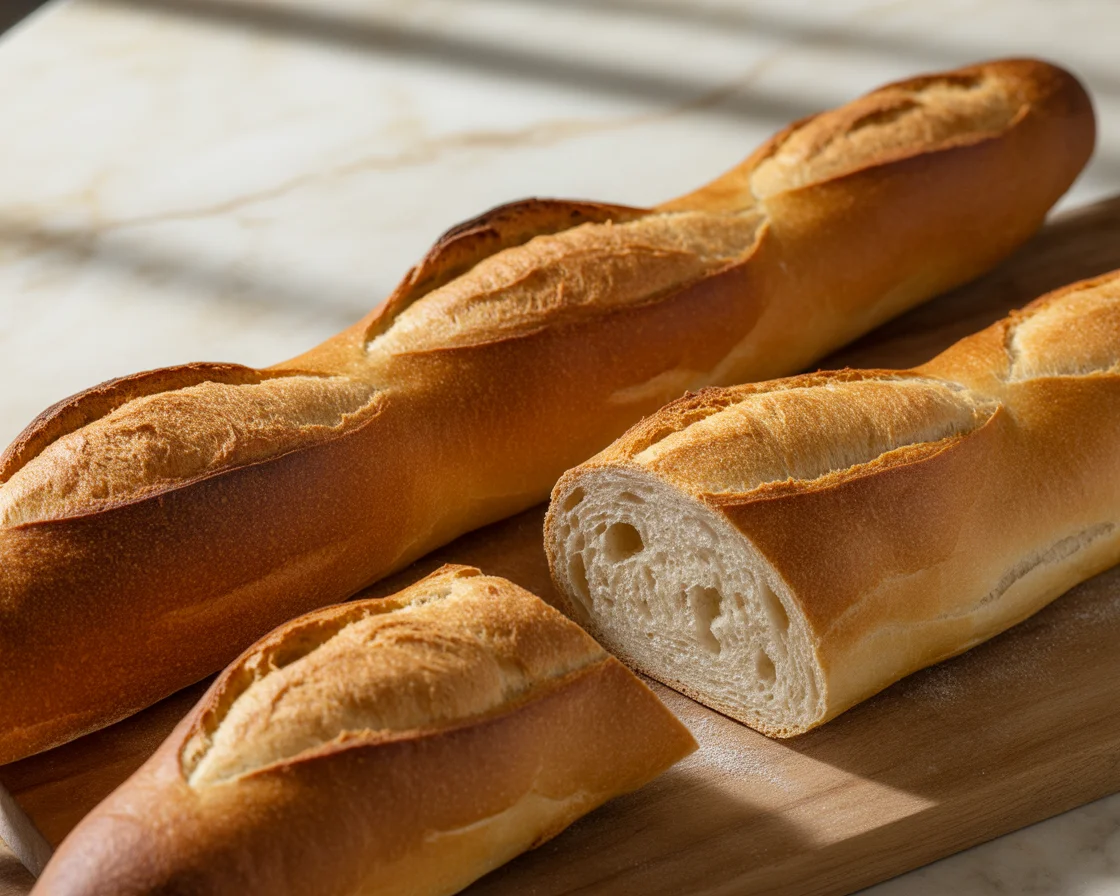
What Makes This Gluten-Free French Bread Recipe Special
Listen. I’ve made a dozen different gluten-free baguettes. Most end up dense, sad, or fall apart if you just look at them wrong. This one is different. It’s chewy yet crusty (for real), has that gold outside, and actually has air pockets! Wild, right?
What makes it work? The secret is a smart mix of flours and a test kitchen trick with steam – like you’re faking a real boulangerie oven at home. Professional steam baking techniques show that steam-injection ovens automatically introduce steam, replacing the old method of hand spritzing the baking loaves, but we can replicate this at home with a simple water tray technique.
The gluten-free baguette recipe below uses only a handful of pantry staples. Arrowroot starch and brown rice flour give structure without turning it into brick, and a little psyllium husk is the special bit that holds it all together.
People ask if it tastes like “real” bread – honestly, I say it tastes better fresh than some five-star restaurant loaves I’ve paid for. The magic is the crust: shatteringly crisp on day one. Plus, you can prep the dough ahead (not even joking), so it fits around your life, not the other way round.
If you’ve already tried to make gluten-free bread before, you know it usually takes FOREVER and creates more dishes than a family reunion. Not today. This is actually doable, and I swear on my favorite pan, you NEED to taste it.
For those new to gluten-free baking, understanding flour combinations is crucial. Check out our guide to gluten-free flour blends to learn which blends work best for artisan-style breads like this baguette.

“I never thought a homemade gluten-free baguette could have that real French crunch! My whole family demolished it in one go. Game-changing and so easy to follow.” — Jen L., Boston
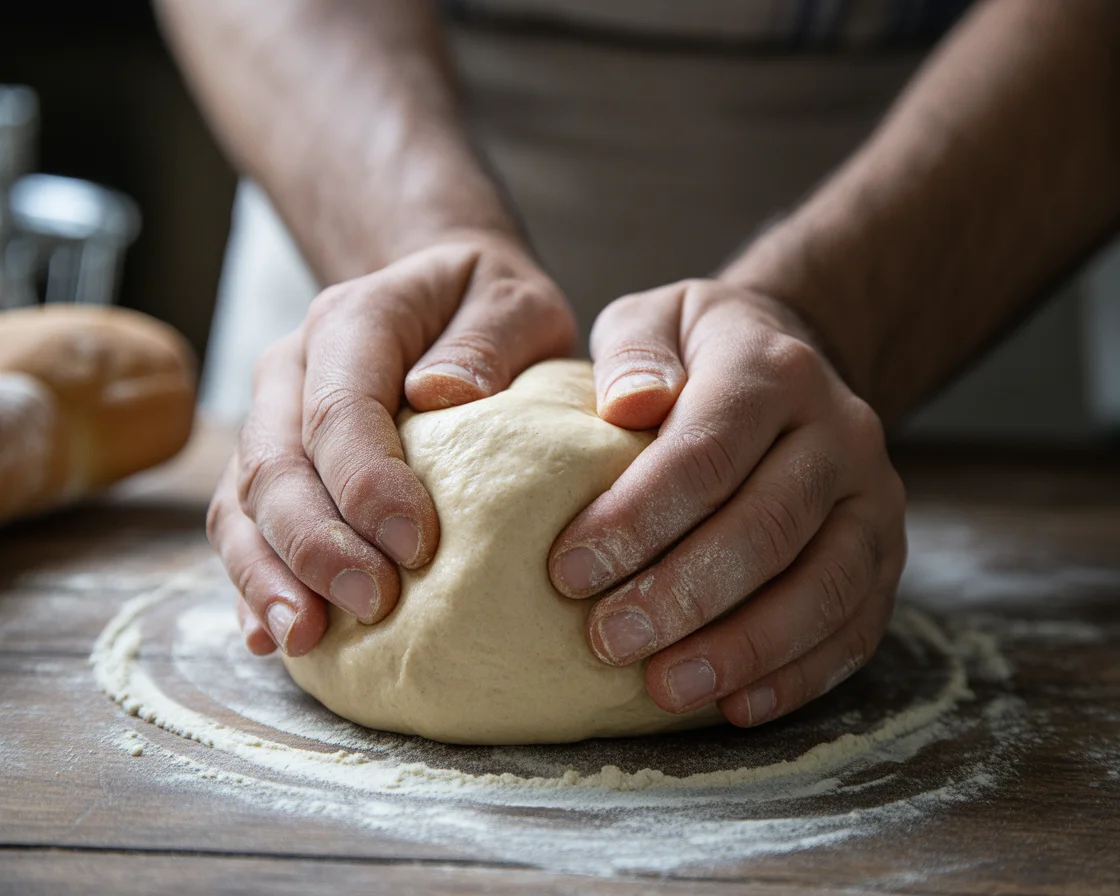
The Science Behind Psyllium Husk in Gluten-Free Baking
Research published in Foods journal demonstrates that the addition of 17.14% psyllium to the formulation improved the structure, appearance, texture, and acceptability of gluten-free bread and delayed bread staling, resembling physical and sensory properties of wheat bread samples during 72 h of storage. This is exactly why psyllium husk is the secret weapon in this recipe.
In gluten-free bread, psyllium husk acts as a binder and moisturizer, helping to replicate the structure of wheat bread, making it possible to create artisan-style loaves that actually hold their shape. For more detailed information about this incredible ingredient, explore our comprehensive guide on psyllium husk in gluten-free bread.
Tips for shaping and baking gluten free baguettes
Here’s the thing about gluten-free baguette dough: it doesn’t behave like regular dough. It’s a bit stickier and definitely needs a gentler touch. Don’t panic if it feels more like thick cake batter than classic dough – that’s correct! Wet your hands. Always. Imagine you’re working with potters’ clay instead of bread, and it helps you not overthink it. Shape the dough into log shapes right on your parchment, then use a bench scraper or your hand to tidy up the sides. Quick moves are your friend.
For the iconic crust, use a super HOT oven, and throw a small tray of water inside at the start. This creates steam, giving you the blister-y, snappy crust (trust me, it’s worth the added step). Slashing the tops with a knife makes that signature look and helps them rise. Oh, and rotate the pan halfway so everything bakes sexy and even.
Honestly, don’t get precious with the shape. Homemade means personality. The more rustic, the better. Just be sure not to skip the preheat – nothing ruins a gluten-free baguette recipe faster than a lukewarm oven.
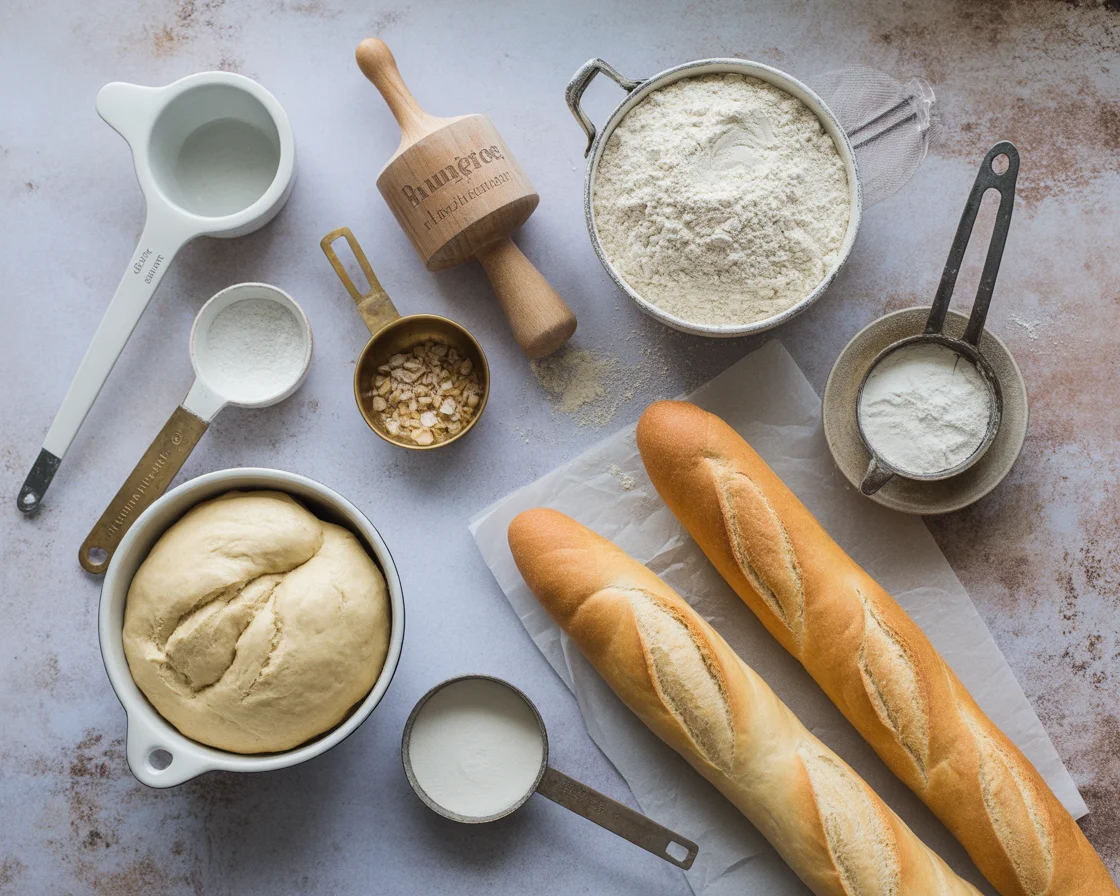
Getting this gluten free baguette dough to rise
Patience is your power-up here. Don’t expect a giant fluffy cloud – gluten-free dough doesn’t rise as high, but it should puff. Let your shaped loaves rest in a warm (but not sauna hot) corner, loosely covered with a towel. Drafts are the enemy, so avoid an open window. Sometimes I put mine near a preheating oven for that cozy heat.
If your kitchen is North Pole-level chilly, pop your dough on top of a warm oven or, worst case, in your turned-off microwave with a mug of boiling water for faux-proofer magic. Depending on your yeast, expect about an hour for a rise. Don’t wait forever just because you think it’ll double – it probably won’t. It’s fine. Bake it anyway. You’ll still get a beautiful crumb (those elusive holes!).
If you’re impatient, I totally get it, but trust the rise – it really does help the texture and final result. And if all else fails? At least your kitchen will smell awesome.
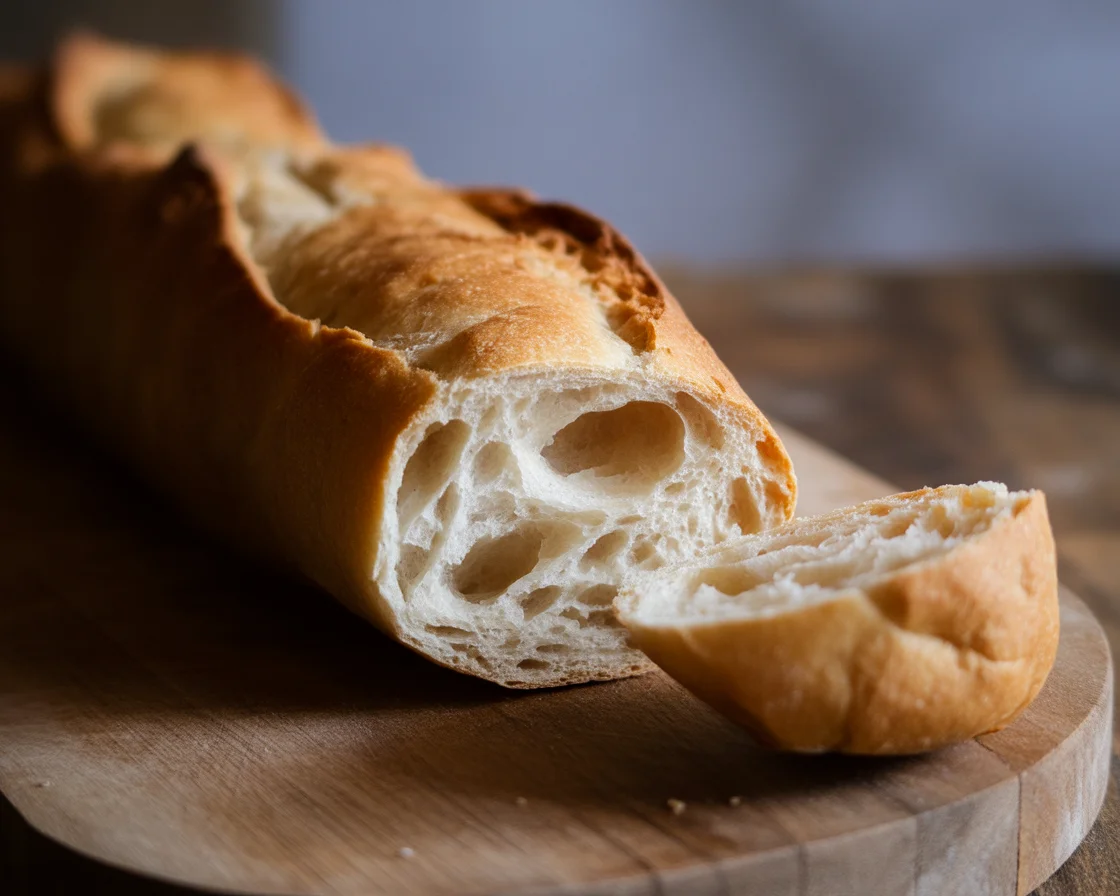
Expert Tips
First thing, don’t substitute every flour and expect perfection. Each one plays its role. Stick to the list your first time, promise? Also, weigh your flour if you can – just a smidge off changes the whole game. Use olive oil on your hands and surfaces to keep sticking at bay (seriously, lifesaver tip).
Salt is not just for flavor. It actually tightens the dough and helps with crust action, so don’t skimp (even if you’re usually low-salt). I always keep a spray bottle on hand – a quick mist right before baking helps the crust go crispy without a crazy hard shell.
Got leftover baguette? Slices freeze like a dream and revive perfectly with five minutes in a toaster. And for goodness sake, eat warm slices with your best butter. No regrets, ever.
For comprehensive storage tips that’ll keep your baguettes fresh longer, check out our detailed guide on storing gluten-free bread.
| Tip | Details |
|---|---|
| Use a Mix of Flours | Combining brown rice flour, arrowroot starch, and psyllium husk gives the best texture. |
| Steam the Oven | Place a tray of water in your oven for added moisture and a crisp crust. |
| Let the Dough Rise | Keep shaped loaves in a warm place, ideally with a bit of steam for a proper rise. |
| Don’t Skip Resting | Let the baked baguette rest before slicing – this prevents a gummy texture. |
| Storing Leftovers | Wrap tightly and refrigerate for up to 2 days, or freeze for longer storage. |
Troubleshooting – why is my baguette not crispy?
Crispy crust struggle is real. If your baguette isn’t snappy, a couple things could be off. First, was your oven HOT from the start? No cheating on preheating! Next, did you add steam? A pan of water is not optional here. If the loaf is a little soft once cool, pop it back in the oven for another five minutes. Sometimes humidity in the kitchen is the enemy. Also, don’t slice into it five seconds after it comes out. Like, let it rest so the crust sets up – otherwise, you lose the crunch and everything goes a bit gummy.
If all else fails, toast a slice and slap on some garlic butter – life’s too short to stress about bread all day anyway.
| Problem | Possible Cause | Quick Fix |
|---|---|---|
| Baguette not crispy | Oven not fully preheated | Always preheat to the correct temperature before baking |
| Soft crust after baking | No steam during baking | Place a pan of water in the oven or mist oven walls during baking |
| Crust softens after cooling | Humidity in the kitchen | Return to oven for 5 minutes to re-crisp before serving |
| Loss of crunch | Sliced too soon after baking | Allow baguette to rest so the crust sets |
Tip: If all else fails, toast a slice and add garlic butter – still delicious!
From Baguettes to Sweet Breads: Exploring More Options
Once you master this crusty baguette technique, you might want to explore other gluten-free bread options. Our collection includes delicious variations like:
- Honey Sweetened Gluten-Free Bread for a naturally sweet option
- Apple Cinnamon Sweet Gluten-Free Bread perfect for breakfast
- Chocolate Sweet Gluten-Free Bread when you’re craving something indulgent
- Pumpkin Sweet Gluten-Free Bread for seasonal flavors
If you’re just starting your gluten-free baking journey, our guide to gluten-free bread recipes for beginners covers all the fundamentals you’ll need to succeed.
Serving Suggestions
- Warm from the oven with salted butter (honestly, it doesn’t get better)
- Dunked in homemade soup or hearty stew
- Stuffed with classic French ham and cheese – oh wow, just do it
- Sliced thin for a crunchy crostini base
Common Questions
Yeah, it’s key. It’s what keeps your gluten-free baguette recipe together instead of crumbling at first bite.
Find one with brown rice flour as the main ingredient. If not, mix your own to avoid weird textures.
That’s normal for a gluten-free baguette recipe. Don’t worry – it’ll bake up beautifully. Trust.
Wrap tightly and chill overnight at room temp, or freeze slices in a zip-top bag.
Absolutely! Just divide it between two pans and don’t crowd them.
Go Bake That Baguette, Friend
So, there you go—everything you need for a show-stopping gluten-free baguette recipe at home. Remember the steam trick, trust the sticky dough, and don’t overthink the shape—that’s the charm. You’ve got this, honestly. Grab your favorite salt, blast that oven, and make a loaf that will impress even the most discerning French bread lovers.
The science is clear: psyllium husk powder has been investigated for its ability to improve the quality and shelf life of gluten-free bread, making it an essential ingredient for anyone serious about gluten-free baking. With proper technique and quality ingredients, home bakers can create artisan gluten-free bread that rivals the very best bakery loaves.
Let me know if you master the crusty top, ok?


Gluten-Free Baguette
Master the art of French baking with this authentic gluten-free baguette that delivers the classic crispy crust and airy, hole-filled interior that makes baguettes legendary. Despite being gluten-free, this bread achieves the perfect chewy texture and golden exterior through careful technique and proper fermentation. Ideal for creating crusty sandwiches, serving alongside cheese and charcuterie, or simply enjoying fresh with butter, this baguette proves that gluten-free baking can capture even the most iconic European bread traditions.
- Total Time: 45 minutes
- Yield: 2 baguettes
Ingredients
- 2 cups brown rice flour
- 1 cup arrowroot starch
- 1/4 cup psyllium husk
- 1 tablespoon salt
- 1 tablespoon sugar
- 2 cups warm water
- 2 teaspoons instant yeast
Instructions
- In a large bowl, combine brown rice flour, arrowroot starch, psyllium husk, salt, and sugar.
- Add warm water and instant yeast; stir until combined.
- Let the mixture rest for about 30 minutes.
- Preheat your oven to 450°F (232°C) and place a tray of water inside to create steam.
- Wet your hands and shape the dough into logs on parchment paper.
- Place the shaped loaves on a baking tray and let them rise for about 1 hour in a warm place.
- Slash the tops of the loaves with a knife.
- Bake in the preheated oven for 25-30 minutes until golden brown.
- Allow the baguettes to cool before slicing.
Notes
For a better crust, ensure the oven is properly preheated and always use steam during baking. Let baked baguettes rest before slicing.
- Prep Time: 15 minutes
- Cook Time: 30 minutes
- Category: Baking
- Method: Baking
- Cuisine: French
- Diet: Gluten-Free

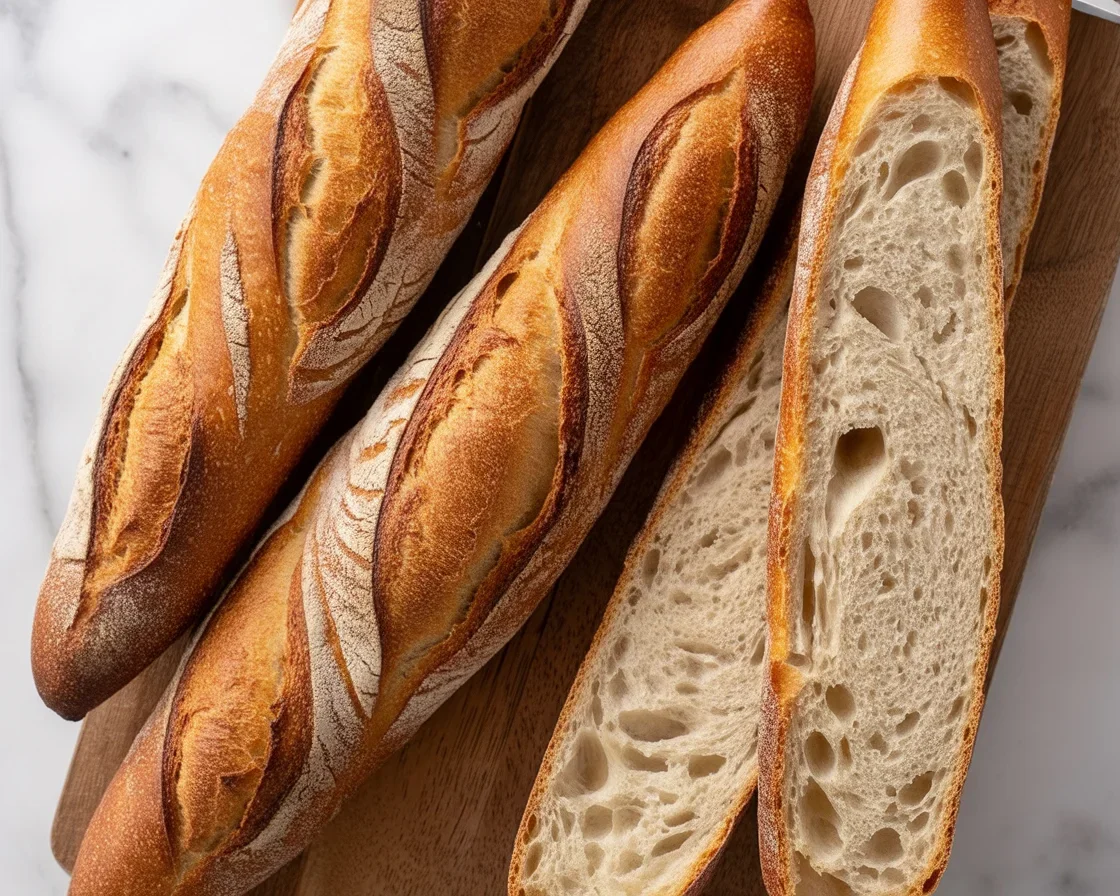
I love to bake GF breads etc
That’s amazing! Gluten-free baking is such a rewarding challenge – there’s nothing quite like the satisfaction of pulling a perfectly risen GF loaf from the oven! I’m always experimenting with different flour blends and techniques to get that ideal texture and flavor. What’s your favorite type of GF bread to bake? I’d love to hear about your go-to recipes or any baking wins you’ve had recently! The GF baking community is so supportive and creative. ❤️
Thank you for this recipe, I can’t wait to try!
for the preheated oven, your recipe instructions say to preheat the oven before you let the dough rise for an hour. My oven doesn’t take that long to preheat so are you suggesting that we need to have it at 450 for close to an hour before baking?
Great catch! No, you definitely don’t need to have your oven at 450°F for a full hour—that would be a waste of energy! The instructions should be clearer: let your dough rise for the full hour first, THEN preheat your oven to 450°F during the last 15-20 minutes of the rise time. That way, the oven is perfectly hot and ready when your dough is done rising. Thanks for pointing this out—I’ll update the recipe to make it more clear! Happy baking!